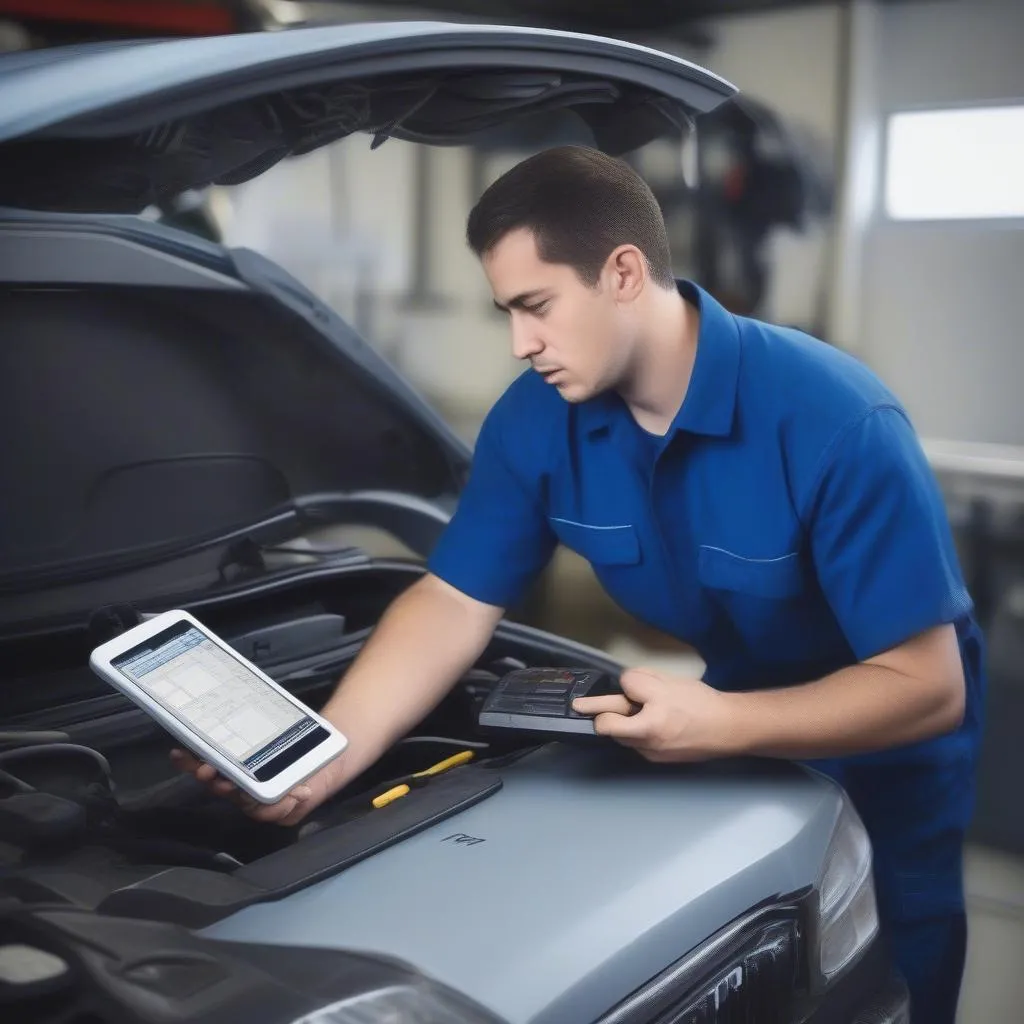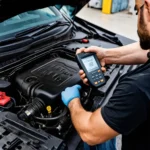Imagine this: you’re driving down a scenic California highway in your trusty Ford Mustang, the wind in your hair, when suddenly, your engine sputters and dies. You limp to a stop, smoke curling from under the hood. After some frantic Googling, you suspect the culprit is your car’s PCM (Powertrain Control Module), the brain of your vehicle’s engine. Now you’re left with a burning question: can you reprogram it yourself with a scan tool, saving a hefty mechanic’s bill?
Decoding the Question: What Does It Mean to Program a PCM?
Before we dive into the how-to, let’s understand what we’re dealing with. The PCM, often called the Engine Control Unit (ECU), is a sophisticated computer controlling your engine’s vital functions: fuel injection, ignition timing, emissions, and more. Reprogramming the PCM means updating its software, often to fix bugs, improve performance, or adapt to new hardware.
From a mechanic’s perspective, understanding PCM programming is essential. “It’s like giving the car’s brain a software update,” says John Miller, a veteran mechanic from Chicago. “It can drastically improve how the car runs, but it requires the right tools and knowledge.”
Can You Program a PCM with a Scan Tool? The Short Answer
Yes, and no. While technically possible, the process is more nuanced than simply plugging in a scan tool and hitting “reprogram.” Here’s why:
Complexity and Risk:
- Not all scan tools are created equal: Basic OBD2 scanners can only read and clear error codes. To reprogram a PCM, you need a professional-grade scan tool with programming capabilities, like those used by dealerships and experienced mechanics.
- Specific software and knowledge are required: Each car model and PCM type requires specific software and procedures. Using the wrong software or procedure can brick your PCM, turning your car into an expensive paperweight.
- Security measures: Car manufacturers have implemented security protocols to prevent unauthorized access to the PCM. This often involves security access codes or subscriptions to online programming portals.
When DIY Might Be Possible:
In some cases, particularly with older vehicles or simpler reprogramming tasks, DIY PCM programming might be feasible for experienced individuals. However, it’s crucial to:
- Thoroughly research your specific vehicle and PCM: Consult your vehicle’s service manual and reputable online forums.
- Acquire the correct professional-grade scan tool and software: These can be expensive, so consider the cost-benefit before investing.
- Proceed with caution and back up your existing PCM data: A single mistake can render your vehicle inoperable.
Navigating the Maze: A Step-by-Step Guide (For Informational Purposes Only)
Disclaimer: The following steps are for informational purposes only and should not be considered a substitute for professional guidance.
1. Gather Your Tools:
- Professional-grade scan tool with programming capabilities
- Vehicle-specific programming software
- Stable power supply (to prevent power interruptions during programming)
- Your vehicle’s VIN (Vehicle Identification Number)
2. Establish a Connection:
- Connect the scan tool to your vehicle’s OBD2 port (usually located under the dashboard on the driver’s side).
- Turn on the ignition but don’t start the engine.
3. Access the PCM Programming Function:
- Navigate the scan tool’s menu to access the PCM programming function. This process will vary depending on the scan tool and software.
4. Enter Security Access Codes (If Required):
- Your vehicle manufacturer or a dealer may need to provide these codes.
5. Follow the On-Screen Prompts:
- The software will guide you through the programming process, which may involve downloading and installing updates or making specific changes to the PCM’s settings.
6. Verify Programming Success:
- Once the programming is complete, the scan tool will verify the process. It’s crucial to ensure there are no errors.
7. Clear Error Codes (If Necessary):
- After programming, clear any error codes that may have been stored during the process.


